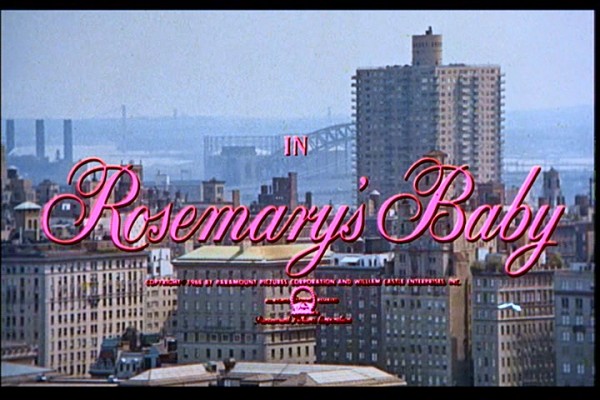‘Rosemary’s Baby’: A Classic Horror Film
August 28, 2014

Flick of The Week, a new weekly series, combs through Netflix Instant and offers a single film worthy of your attention.
“Awful things happen in every apartment building.”
Watching a horror film is sometimes a test of expectations. Mediocre horror can shock and spook; a scream in the dark, a careless tour through a haunted house, a killer on the loose. These tropes can very well work, but when you buy a ticket for a movie that rests atop such premises, you buy the anticipated shock that patently comes with it.
Fantastic horror (and I think “Rosemary’s Baby” is the very best) subverts your expectations to what horror can be, testing your limitations in confronting unflinching and lingering horror that isn’t found in an abandoned mansion, but perhaps in a Manhattan apartment. And maybe the villains aren’t anonymously on the loose, but instead, the people you trust the most.
Roman Polanski’s “Rosemary’s Baby,” based on the novel of the same name by Ira Levin, hit theaters in 1968, one of the first horror films of its kind. Mia Farrow, in her most iconic role, stars as Rosemary Woodhouse, a waifish, naive, newlywed who moves into a new Upper West Side apartment with her husband Guy (John Cassavetes) only to have their new life together disturbed by her eccentric neighbors Minnie (Ruth Gordon) and Roman Castavet (Sidney Blackmer).
Rosemary becomes pregnant, but her pregnancy doesn’t feel right; she’s losing weight, her pains are incalculable, and nothing her doctors prescribe can cure her ailments. Rosemary comes to believe that her husband and neighbors have schemed an elaborate plan to use her body and child as a part of a religious ritual.
Photographed by William A. Fraker, a horror film has never looked so seemingly ordinary. Fraker is able to locate terror in the most mundane corners of a scene: a piece of liver, a necklace, a scrabble tile. Manhattan itself has never looked so bloodless. Unlike other horror films, it doesn’t rely on cheap frills or sudden crescendos of shrill music, instead Fraker sprinkles his dark magic into every shot.
We follow Rosemary through her panic, paranoia, and revelations as she lifts up the covers of her own reality to reveal a sinister web of lies. The real horror of “Rosemary’s Baby” is accepting the possibility that our own lives could be predicated upon such deceit and coming to terms with our weakness in the face of more powerful systems and people.
Ruth Gordon won the Academy Award for Best Supporting Actress and Polanski was nominated for the Academy Award for Best Adapted Screenplay, but he lost to James Goldman for “The Lion in Winter.” Its influence on the genre and cinema itself is immeasurable.
Rosemary’s Baby remains a classic horror film today because it realizes that real terror lies not in gory violence or spooky bumps in the night, but in the invisible systems that manifest themselves exactly like ghosts in the dark, creating situations and ideas that linger long after the lights have turned back on. Real horror exists within.
My life could easily be separated into two halves: “Before ‘Rosemary’s Baby’” and “After ‘Rosemary’s Baby.’” I’ve seen the film nearly ten times now, but each viewing yields another brilliant detail, another stunning frame, or another understanding of what cinema could be that it’s hard not to start this series with an essential, if savage, beginning.












